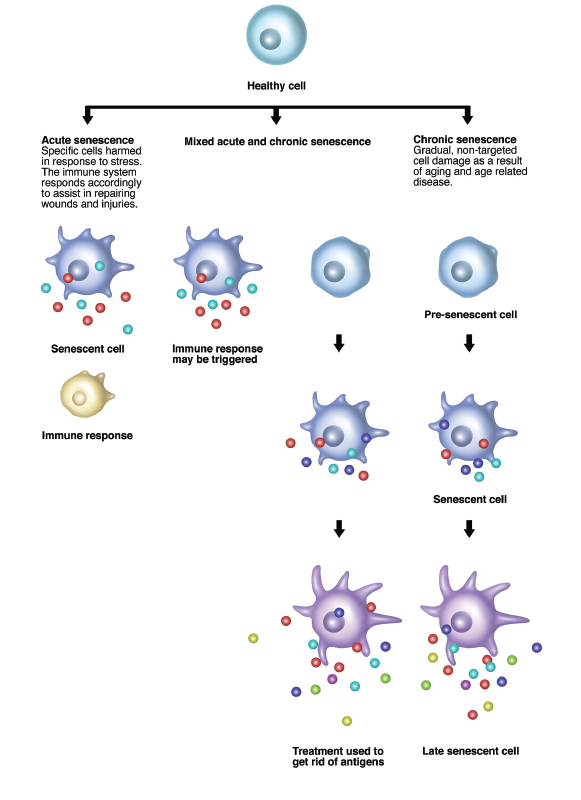You may say the 30 million Americans with osteoarthritis (OA) are walking around with a Band-aid—or so it seems.1 That’s because there’s no actual cure for this disabling condition. However, an international group of scientists is making headway on a method of eliminating aging—senescent—cells as a way to prevent or even reverse OA.
Cartilage Disappears, Senescent Cells Remain
In OA, joint cartilage is worn down. What hangs around, however, are these cells that can no longer divide. They accumulate and, researchers say, can cause trouble.
Jennifer H. Elisseeff, PhD, director of the Translational Tissue Engineering Center and Morton Goldberg Professor of Ophthalmology and Biomedical Engineering at the Johns Hopkins Wilmer Eye Institute, was co-author of a recent study, “Local clearance of senescent cells attenuates the development of post-traumatic osteoarthritis and creates a pro-regenerative environment,” published in Nature Medicine.2
Dr. Elisseeff says, “Senescent cells produce SASP [senescence-associated secretory phenotype], which is made up of 100 or more molecules that include cytokines and extracellular-matrix-modifying enzymes—essentially the things we often see in inflammatory disease. The senescent cells are calling immune cells to help with repair. However, if something goes wrong, like in cartilage tissue, you get a pro-inflammatory immune response that can be problematic.”
Detailing the history of this work, Dr. Elisseeff states, “My colleagues and I initially approached cartilage repair from the orthopedic-surgery side, looking at building biomaterials to augment microfracture. But it became clear that we needed to address issues of inflammation in the local environment. We had already taken note of the fact that the literature contained information on an association between senescent cells and arthritis in patients undergoing total knee arthroplasty. Soon after, we were approached by San Francisco-based Unity Biotechnology with the idea of looking at senescent cells in cartilage.”

Gwen Shockey / Science Source
Promising New Drug
“For this study,” notes Dr. Elisseeff, “we performed surgery on mice in order to mimic joint injury. Our ultimate goal was a therapeutic agent … molecules that could be used as drugs to clear these cells in a selective fashion. Postoperatively, we injected the mice with a drug named UBX0101, a molecule that had already been shown to eradicate senescent cells in the lab. This drug, co-developed by Unity Biotechnology, resulted in a 50% elimination of senescent cells. An unexpected clinical bonus was that it led to new cartilage formation.”
To see what this might mean for humans, Dr. Elisseeff and colleagues tested UBX0101 in human knee tissue of individuals afflicted with severe OA. “The cells were exposed to this molecule for four days; we were pleased to find a major reduction in the number of senescent cells. The most compelling finding was that when we removed these cells, even patients with quite advanced OA benefitted.”

